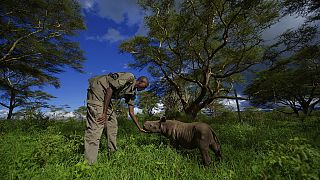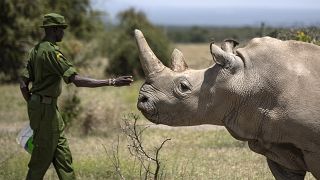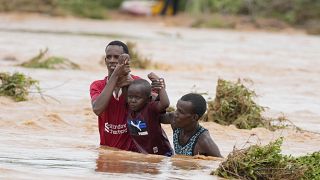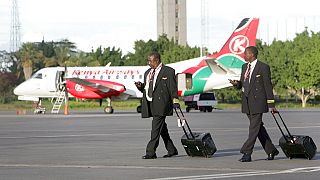Kenya
After an unsuccessful 2018 attempt to translocate black rhinos, Kenya has successfully relocated 21 mammals.
The 18-day translocation was executed by highly trained capture and veterinary experts from the Kenya Wildlife Service and its partners.
The animals' new home is an expansive 58,000-acre territory in Loisaba Conservancy in central Kenya with 25,000 acres dedicated exclusively to the conservation of this iconic species.
The county witnessed the tragic poaching of its last rhinos half a century ago.
Their return is welcomed by rangers.
"It's been decades since rhinos roamed here. Almost 50 years ago, their numbers were severely impacted by poaching. Now, our focus is on rejuvenating this landscape and allowing rhinos to breed, aiming to restore their population to its former splendour," Daniel Ole Yiankere said.
This is Kenya's most significant rhino relocation project to date, and involved the meticulous efforts of tracking, darting, and moving critically endangered rhinos to their new home.
The chief executive of Loisaba Conservancy celebrated a milestone on Tuesday (Feb. 13).
"From a low of 300 and something individuals, we have now hit a huge milestone at the beginning of this year of 1,004 eastern black rhinos in Kenya," Tom Silvester said.
17 sancturies across the country
Afte dark days in the 1980s, Kenya's black rhino population is now the third-largest globally, following South Africa and Namibia.
The big challenge that has come from that is that we have run out of space in the established sanctuaries."
The achievement adds to the 17 sanctuaries across the country.
As Kenya tries to re-establish its rhino population, moves like this will be required so that no one area becomes overpopulated. this research scientist explains.
"Once you reach the maximum ecological carrying capacity the reproduction rate goes down, and therefore by removing some animals we expect that the rhino population in those areas will rise up. And then we reintroduce that founder population of at least 20 animals into new areas and we expect the population growth to thrive before it reaches the ecological carrying capacity."
The 21 black rhinos were caught last January and transferred from Nairobi National Park, Ol Pejeta, and Lewa conservancies.
Kenya also plays a crucial role in saving the northern white rhino from extinction, hosting the last two females of the species globally.
Collaborating through the BioRescue project, a consortium of local and international experts, Kenya has developed 30 embryos awaiting implantation into southern white rhino surrogate females, contributing to global conservation endeavours.













01:02
Pics of the day: April 25, 2024
01:35
Kenya: Local anti malaria drug production signals progress
01:02
Pics of the day: April 24, 2024
01:40
Nairobi residents grapple with floods aftermath
02:29
"Efficient food systems key to tackling food waste", UNEP programme manager
01:02
Pics of the day: April 23, 2024